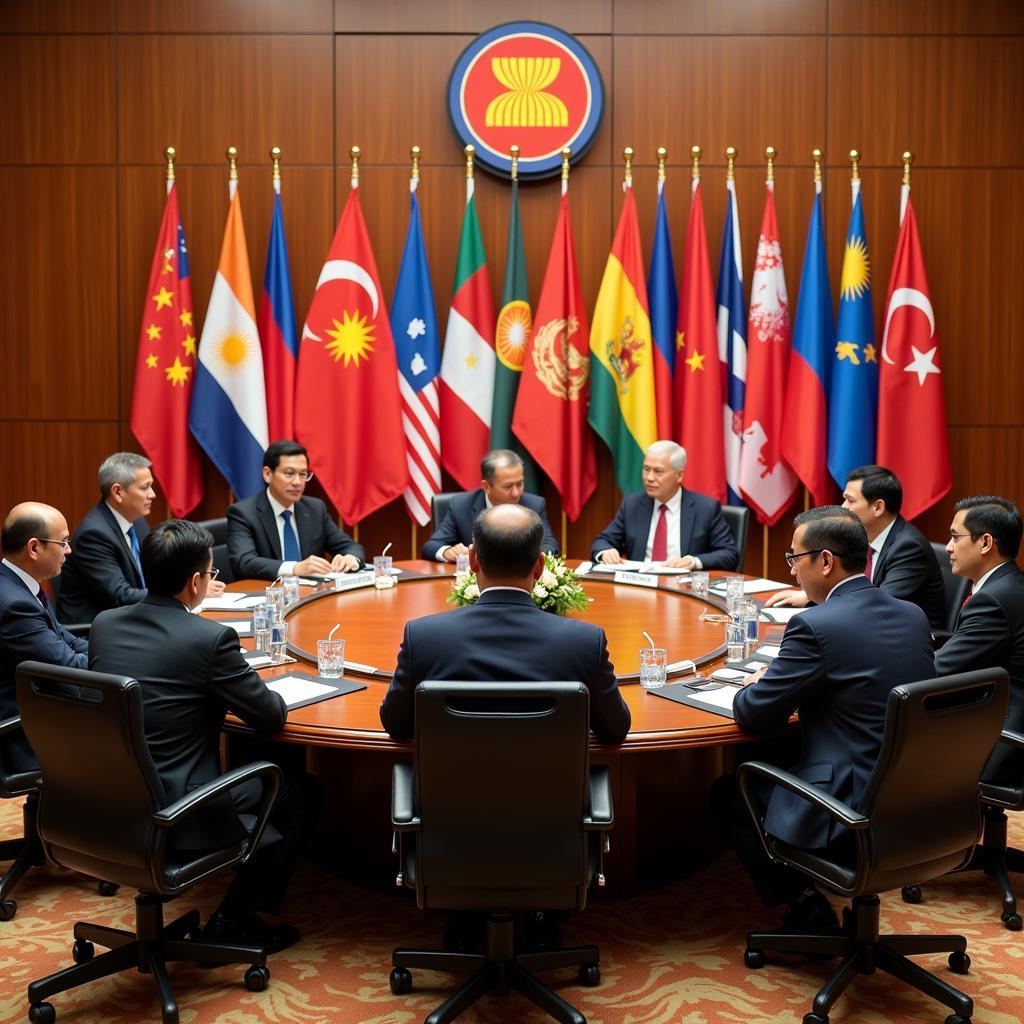Asean Meetings serve as the cornerstone of regional cooperation and integration within Southeast Asia. These gatherings, ranging from summits to ministerial-level dialogues, provide a platform for leaders and officials from the 10 ASEAN member states to engage in discussions, formulate policies, and strengthen ties.
The Significance of ASEAN Meetings
ASEAN meetings play a crucial role in:
- Enhancing Political and Security Cooperation: Discussions on regional security challenges, such as transnational crime, terrorism, and maritime security, help foster trust and cooperation among member states.
- Promoting Economic Integration: Meetings facilitate negotiations for trade agreements, investment liberalization, and the creation of a single market and production base.
- Addressing Social and Cultural Issues: ASEAN meetings address common concerns like poverty reduction, human development, and the promotion of cultural exchange.
- Strengthening ASEAN’s Global Role: These gatherings provide opportunities for ASEAN to coordinate positions and engage with external partners on regional and global issues.
 ASEAN Summit Meeting
ASEAN Summit Meeting
Types of ASEAN Meetings
The ASEAN meeting structure is multifaceted and includes various levels of engagement:
- ASEAN Summit: Held twice a year, the summit brings together heads of state to discuss key strategic issues and provide direction for ASEAN’s future.
- ASEAN Ministerial Meetings: These meetings are held throughout the year and involve ministers from different sectors, such as foreign affairs, economy, and education, to address specific areas of cooperation.
- Senior Officials’ Meetings: Senior officials from member states convene to prepare for ministerial and summit-level meetings, ensuring smooth coordination and follow-up.
- ASEAN Sectoral Bodies: Numerous specialized bodies focus on specific areas like agriculture, energy, and tourism, facilitating deeper collaboration in these sectors.
Key Outcomes and Achievements
ASEAN meetings have yielded significant outcomes, including:
- Establishment of the ASEAN Free Trade Area (AFTA): AFTA has boosted intra-ASEAN trade and investment, contributing to the region’s economic growth.
- Creation of the ASEAN Charter: Adopted in 2007, the charter provides a legal and institutional framework for ASEAN, enhancing its effectiveness and credibility.
- Development of the ASEAN Community Vision 2025: This roadmap outlines ASEAN’s shared vision and goals for political, economic, and socio-cultural development.
Challenges and Future Directions
While ASEAN meetings have been instrumental in advancing regional integration, challenges remain:
- Managing Territorial Disputes: Navigating sensitive territorial disputes in the South China Sea requires delicate diplomacy and consensus-building.
- Narrowing the Development Gap: Addressing disparities in economic development among member states is crucial for inclusive growth and stability.
- Enhancing ASEAN’s Global Influence: ASEAN needs to strengthen its voice and play a more active role in shaping the global agenda.
Conclusion
ASEAN meetings are indispensable for fostering regional dialogue, cooperation, and integration. As ASEAN navigates an increasingly complex global landscape, these gatherings will continue to be vital for addressing shared challenges, harnessing opportunities, and ensuring a prosperous and peaceful Southeast Asia. For a comprehensive overview of upcoming ASEAN meetings, refer to the ASEAN calendar of meetings. To delve deeper into specific meetings and sessions, explore the ASE sessions section.
